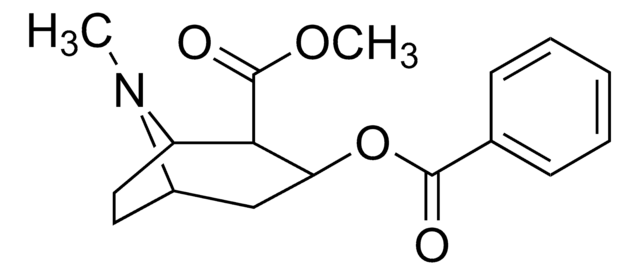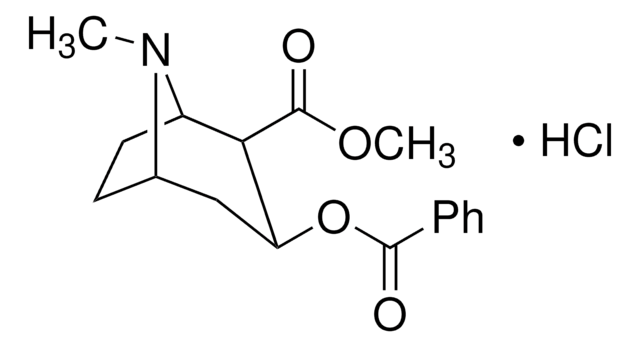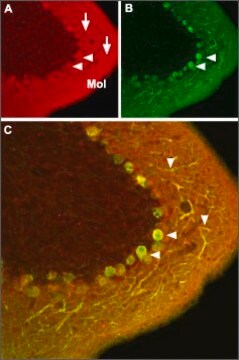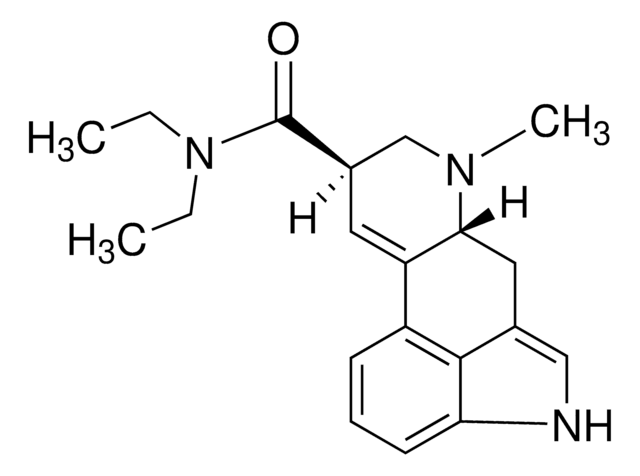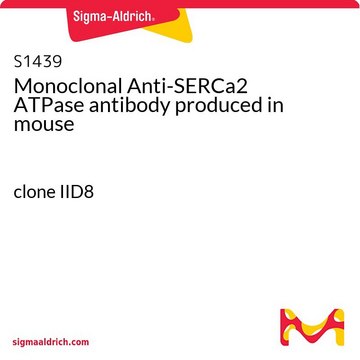Kluczowe dokumenty
C5776
Cocaine hydrochloride
Synonim(y):
Ecgonine methyl ester benzoate hydrochloride
About This Item
Polecane produkty
Formularz
powder
Poziom jakości
kontrola substancji
USDEA Schedule II; Home Office Schedule 2; stupéfiant (France); kontrollierte Droge in Deutschland; regulated under CDSA - not available from Sigma-Aldrich Canada; estupefaciente (Spain); Decreto Lei 15/93: Tabela IB (Portugal)
Zastosowanie
forensics and toxicology
ciąg SMILES
Cl.COC(=O)[C@H]1[C@H](C[C@@H]2CC[C@H]1N2C)OC(=O)c3ccccc3
InChI
1S/C17H21NO4.ClH/c1-18-12-8-9-13(18)15(17(20)21-2)14(10-12)22-16(19)11-6-4-3-5-7-11;/h3-7,12-15H,8-10H2,1-2H3;1H/t12-,13+,14-,15+;/m0./s1
Klucz InChI
PIQVDUKEQYOJNR-VZXSFKIWSA-N
Szukasz podobnych produktów? Odwiedź Przewodnik dotyczący porównywania produktów
Zastosowanie
- in saline control to study the effects of cocaine self-administration in mouse brain
- as adopamine (DA), noradrenaline (NA), and serotonin (5-HT) reuptake inhibitor to evoke neurotransmitter release in artificial fish cerebrospinal fluid (aCSF)
- to examine conditioning to intravenous cocaine hydrochloride
Działania biochem./fizjol.
Cechy i korzyści
Hasło ostrzegawcze
Danger
Zwroty wskazujące rodzaj zagrożenia
Zwroty wskazujące środki ostrożności
Klasyfikacja zagrożeń
Acute Tox. 2 Inhalation - Acute Tox. 2 Oral - Repr. 2 - STOT SE 3
Organy docelowe
Central nervous system
Kod klasy składowania
6.1A - Combustible acute toxic Cat. 1 and 2 / very toxic hazardous materials
Klasa zagrożenia wodnego (WGK)
WGK 3
Temperatura zapłonu (°F)
Not applicable
Temperatura zapłonu (°C)
Not applicable
Środki ochrony indywidualnej
Eyeshields, Faceshields, Gloves, type P3 (EN 143) respirator cartridges
Wybierz jedną z najnowszych wersji:
Masz już ten produkt?
Dokumenty związane z niedawno zakupionymi produktami zostały zamieszczone w Bibliotece dokumentów.
Nasz zespół naukowców ma doświadczenie we wszystkich obszarach badań, w tym w naukach przyrodniczych, materiałoznawstwie, syntezie chemicznej, chromatografii, analityce i wielu innych dziedzinach.
Skontaktuj się z zespołem ds. pomocy technicznej